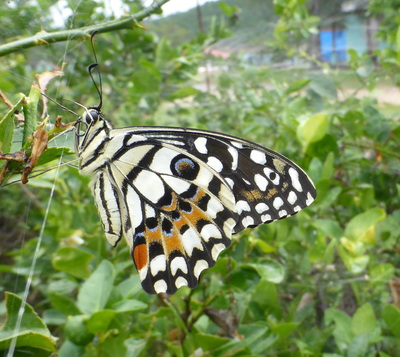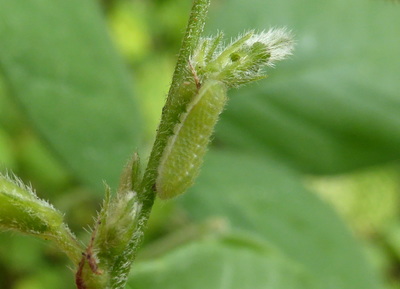|
We had to change our plans this morning because of the weather. With intermittent showers and thunder and lightning not far away we took a taxi to Boca de Sama a few miles to the east along the coast in the hope that it would be sunny there. As we drove into the little fishing village there were large named memorials to those locals who died in 1971 when attacked by CIA-funded rebels trying to overthrow the Cuban government. Five minutes after we arrived there was a huge downpour and we had to take shelter under the canopy of the local bar - we were the only people around. And the only wildlife on view in the rain were lots of hermit crabs running around on the floor so we collected them up and moved them to safety so we didn't tread on them. Even in the rain it was still very warm and as soon as it stopped we were taken by the lady on the local trinket stall to see the Lime Swallowtails Papilio demoleus on the lime trees in her garden. We had been told about this by others in our hotel a few days previously and although there were fewer adults it was nice to see the pupae. It wasn't long before the sun came out and various skippers started flying and nectaring on a patch of the pink-flowering Antigonon leptopus. Commonest amongst these were Purple-washed Skippers Panoquina lucas and Tropical Chequered Skippers Pyrgus oileus though there was also a Violet-banded Skipper Nyctelius nyctelius. The P. lucas were much more common on this trip that our previous visits to Cuba and we saw them almost every day often in some numbers. On our way back we stopped in at the track near the Paradisus hotel where there were several swallowtails nectaring on a Delonix tree. This is a member of the pea family in the Fabaceae but I'm not sure which species. I tried for some time (and failed dismally) to get reasonable shots of De Villiers' Swallowtail Battus devilliers but that's the way it goes sometimes. To photograph these in flight it has to be sunny and it wasn't at the time. I searched for and found two larvae of the Cassius Blue Leptotes cassius that I had watched laying on another pea species on 5 November. One was now in its third instar. Back at the water tank track I couldn't resist taking more pictures of the two Cyclargus species that we had been seeing here the last few days but best of all was a beautiful male Martial Scrub-Hairstreak Strymon martialis that appeared on the same Varronia globosa bush for a few moments before disappearing. This was the 50th species that we had seen on this short length of track in three days - brilliant!
0 Comments
Leave a Reply. |
Welcome to our Blog
Here we will post interesting news about what we and others have seen in Cuba. Archives
July 2024
Categories |


















 RSS Feed
RSS Feed